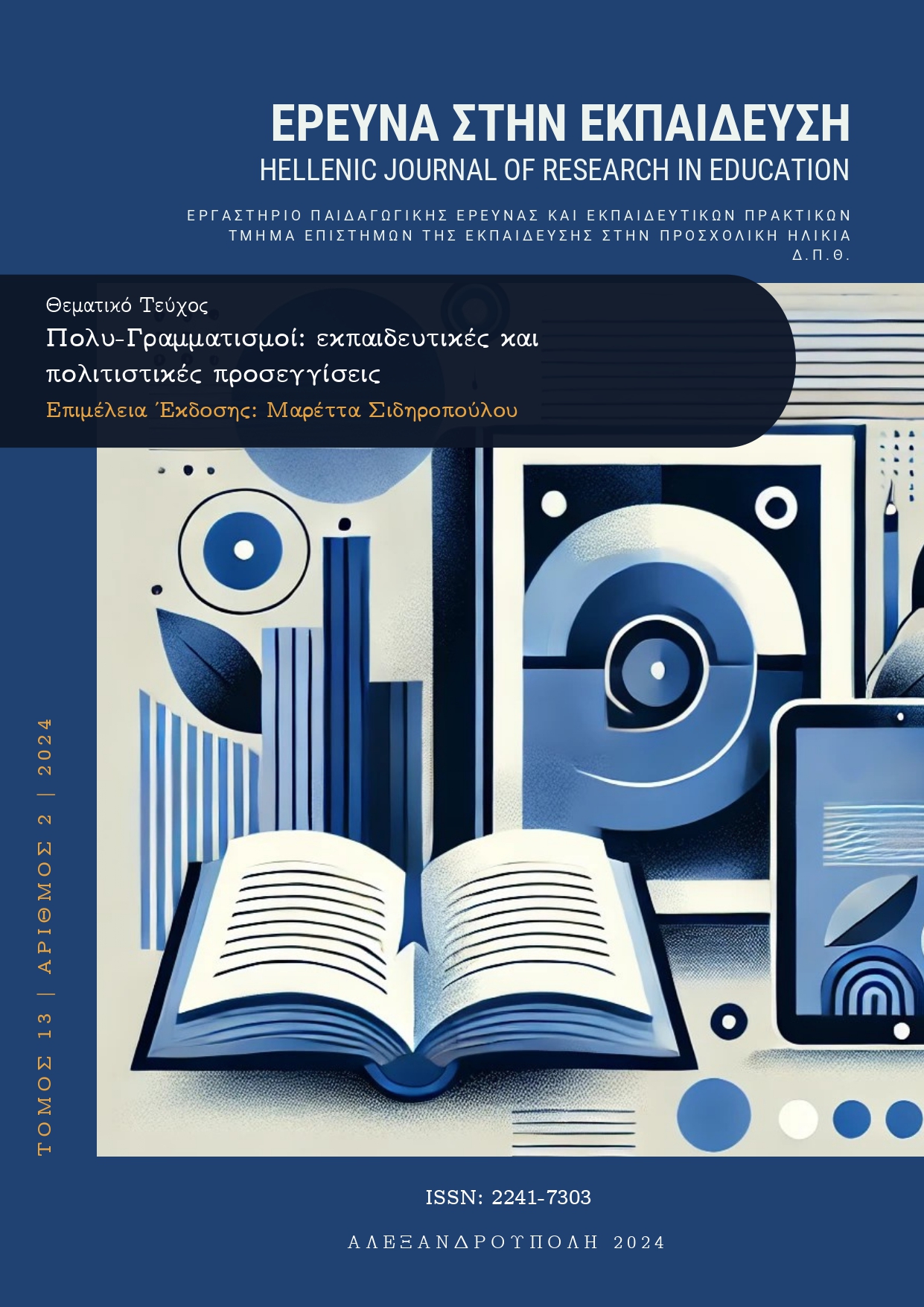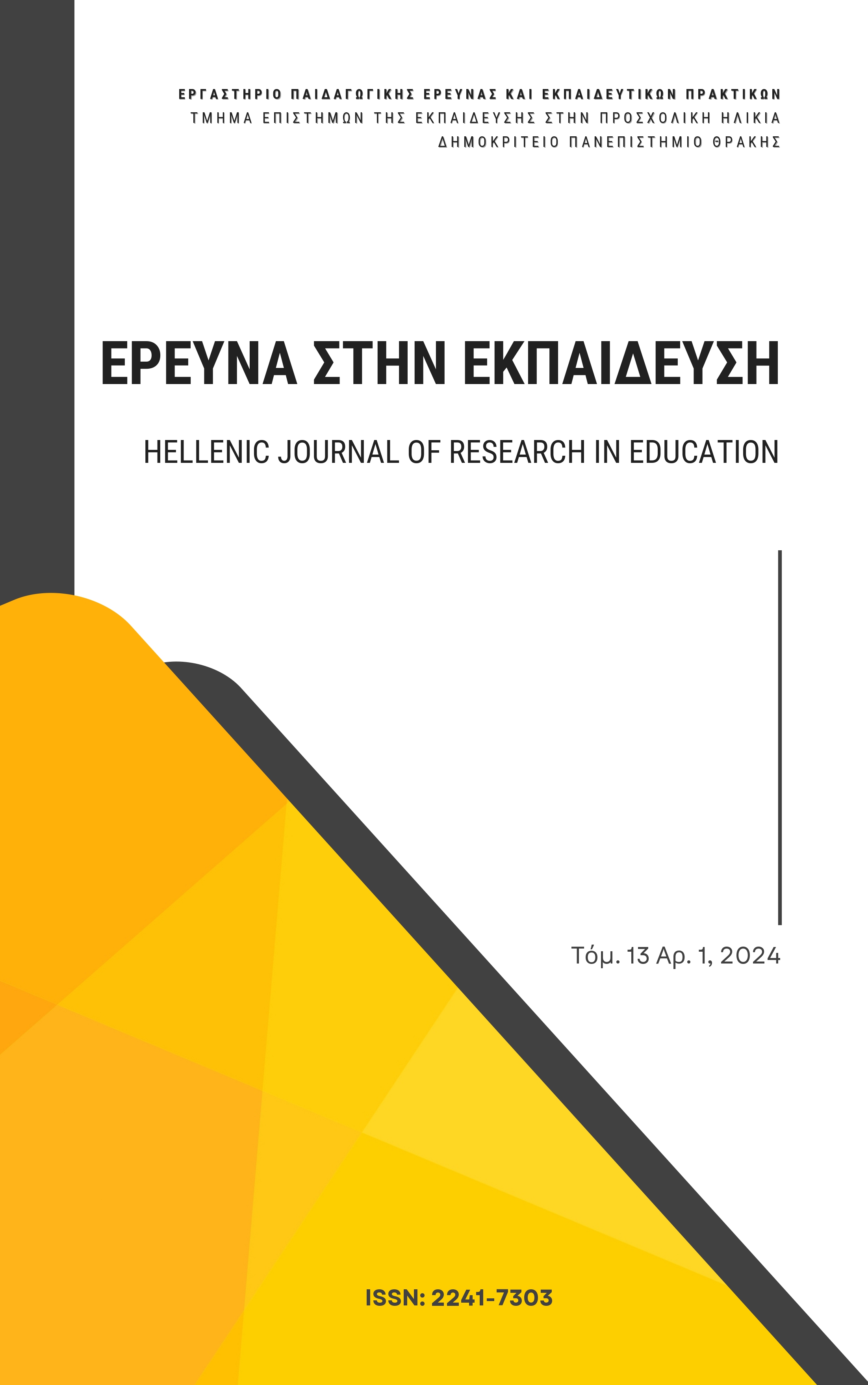Εμπλουτίζοντας τις προσεγγίσεις γραμματισμού για παιδιά με Διαταραχή Αυτιστικού Φάσματος (ΔΑΦ) με στοιχεία Πολυγραμματισμών

Περίληψη
Η προσέγγιση των Πολυγραμματισμών αντιμετωπίζει τον γραμματισμό ως μια δυναμική διαδικασία που εξελίσσεται με την τεχνολογική και κοινωνική αλλαγή, αναγνωρίζει τη σημασία των διαφορετικών πολιτισμικών και κοινωνικών πλαισίων στη διαμόρφωση του γραμματισμού και ενθαρρύνει την ενεργή συμμετοχή, την αλληλεπίδραση και τη συνεργασία μεταξύ των μαθητών. Δεν πρόκειται, δηλαδή, για μία μεμονωμένη δεξιότητα, αλλά για μία πολυδιάστατη ικανότητα που περιλαμβάνει διάφορες μορφές επικοινωνίας και κατανόησης. Η προσέγγιση αυτή προσφέρει ένα ολιστικό πλαίσιο για την ανάπτυξη των δεξιοτήτων γραμματισμού, ανταποκρινόμενο στις ανάγκες των μαθητών σε έναν συνεχώς μεταβαλλόμενο τεχνολογικό και κοινωνικό κόσμο.Έρευνες σε παιδιά με Διαταραχή Αυτιστικού Φάσματος (ΔΑΦ) έχουν επισημάνει τη μεγάλη ετερογένεια που παρατηρείται στις δεξιότητες γραμματισμού μεταξύ των παιδιών αυτών, όπως ακριβώς ποικίλλουν και οι γλωσσικές και γνωστικές ικανότητές τους. Σε σχέση με τις αναγνωστικές ικανότητές τους, τα παιδιά με ΔΑΦ μπορεί να αντιμετωπίζουν σημαντικές προκλήσεις και δυσκολίες, ειδικά μάλιστα αυτά που έχουν χαμηλές γλωσσικές δεξιότητες. Ωστόσο, υπάρχουν και μελέτες που δεν εντοπίζουν δυσκολίες στην αναγνωστική ικανότητα των παιδιών στο φάσμα, αλλά επισημαίνουν ελλειμματική αναγνωστική κατανόηση. Αντίστοιχα, τα παιδιά με ΔΑΦ συχνά επιδεικνύουν ένα εύρος διαφορετικών ικανοτήτων στην ορθογραφία, με ορισμένα από αυτά να εμφανίζουν δεξιότητες ανάλογες με την ηλικία τους, ενώ άλλα να αντιμετωπίζουν δυσκολίες στην ορθογραφική ικανότητα. Σκοπός της παρούσας εργασίας είναι αφού περιγράψει ερευνητικά δεδομένα σχετικά με την ποικιλομορφία στις δεξιότητες γραμματισμού των παιδιών στο φάσμα, να αναφερθεί σε πιο σύγχρονες προσεγγίσεις, όπως η προσέγγιση των πολυγραμματισμών, οι οποίες προσφέρουν ένα ευρύτερο και πιο περιεκτικό πλαίσιο για την κατανόηση και τη διδασκαλία του γραμματισμού στα παιδιά με ΔΑΦ. Με την ενσωμάτωση στοιχείων πολυγραμματισμών στις προσεγγίσεις γραμματισμού για παιδιά με ΔΑΦ, οι εκπαιδευτικοί μπορούν να δημιουργήσουν πιο συμπεριληπτικές, ελκυστικές και αποτελεσματικές μαθησιακές εμπειρίες που να ανταποκρίνονται στις ποικίλες ανάγκες και να προάγουν την ολοκληρωμένη ανάπτυξη του γραμματισμού.
Λεπτομέρειες άρθρου
- Πώς να δημιουργήσετε Αναφορές
-
Παπουλίδη Α. (2024). Εμπλουτίζοντας τις προσεγγίσεις γραμματισμού για παιδιά με Διαταραχή Αυτιστικού Φάσματος (ΔΑΦ) με στοιχεία Πολυγραμματισμών. Έρευνα στην Εκπαίδευση, 13(2), 92–108. https://doi.org/10.12681/hjre.37314
- Ενότητα
- Άρθρα

Αυτή η εργασία είναι αδειοδοτημένη υπό το CC Αναφορά Δημιουργού – Μη Εμπορική Χρήση – Παρόμοια Διανομή 4.0.
Τα πνευματικά δικαιώματα των άρθρων του περιοδικού ανήκουν στους συγγραφείς. Τα άρθρα διατίθενται με άδειες Creative Commons CC-BC-SA 4.0



